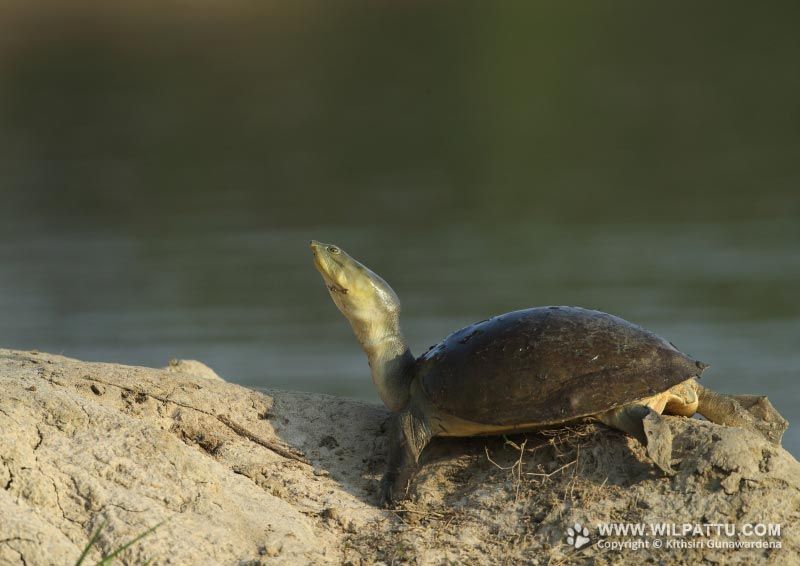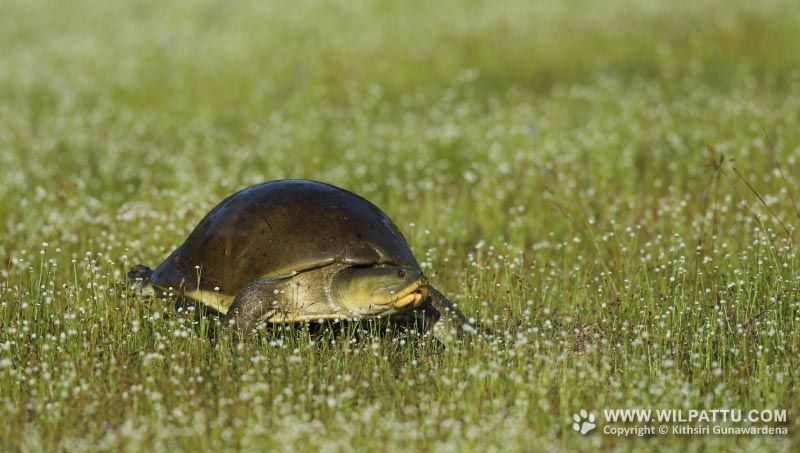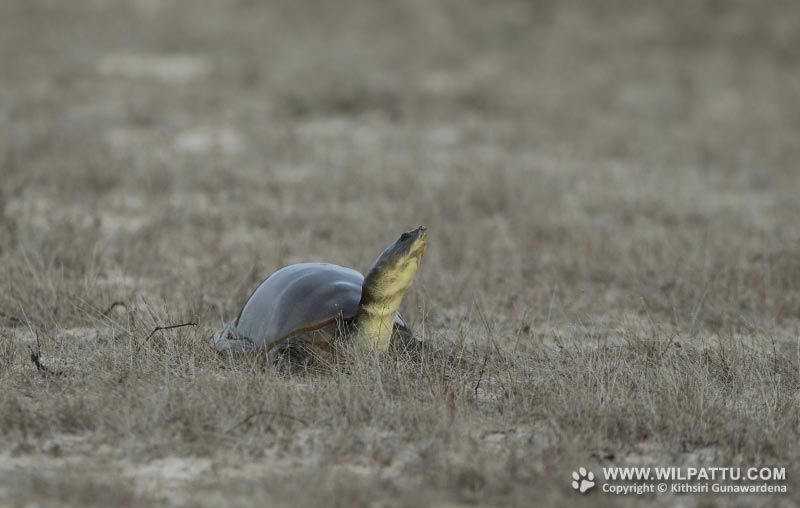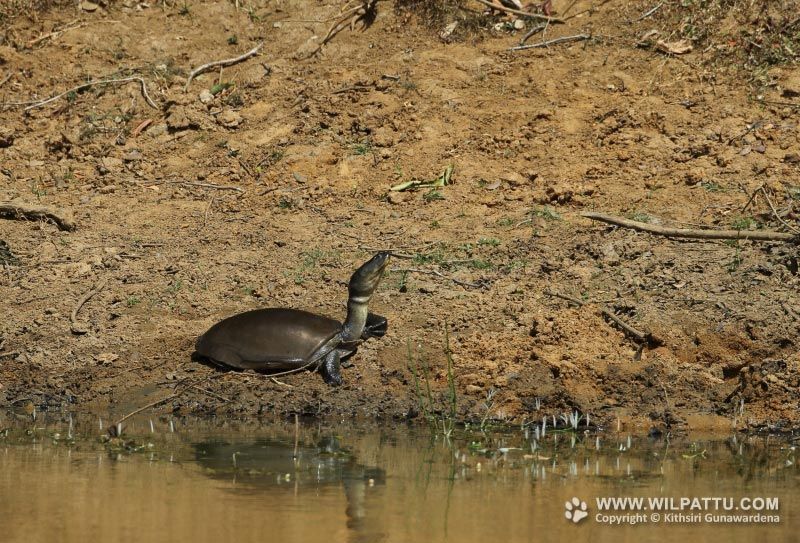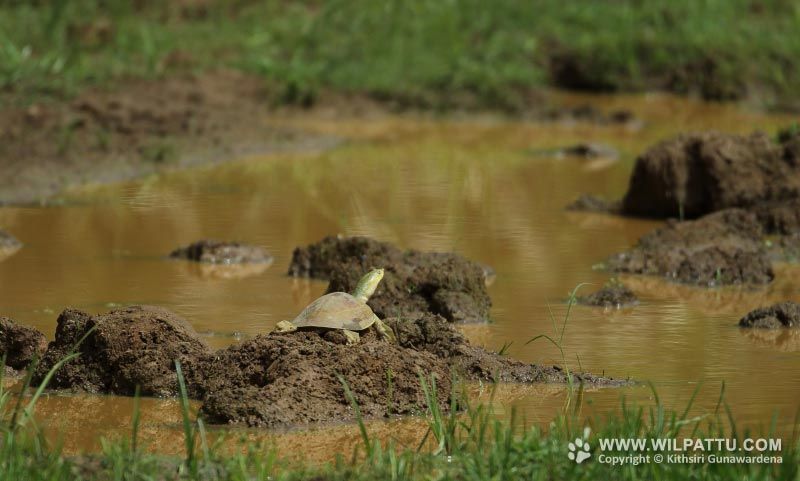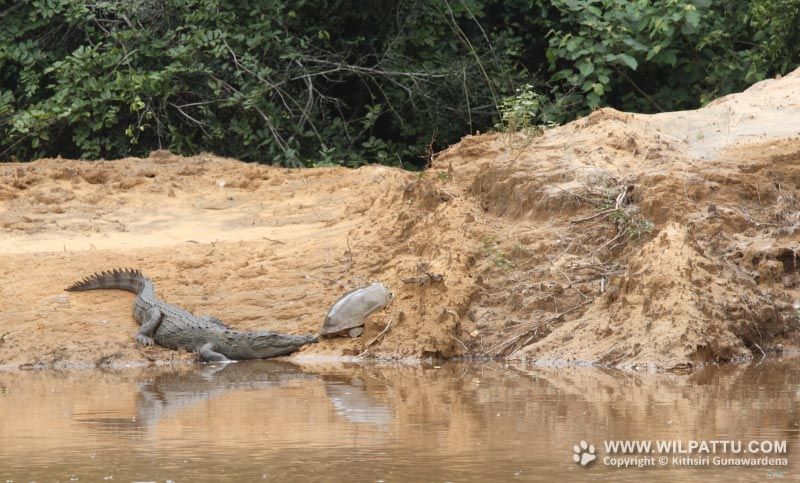
Reptiles ‹‹ Go Back
This turtle is found in the lowlands throughout the country but is rare in the higher hills. This is an endemic speceis.
Even though the conservation status of the species under reference is regarded as “Least Concerned” (National Red List 2012), the Flapshell Turtle is strictly protected under schedule II of the Fauna and Flora Protection Ordinance as amended by Act No. 22 of 2009, due to the steady decline of its numbers.
These turtles used to be extremely common in most water bodies throughout the lowlands about three decades ago but have become less plentiful in localities outside protected areas due to poaching. In the early seventies they were a common sight at the lake in Kandy along with the more common Parker’s Black Turtles. They are rarely seen at this locality now. They are however, quite common in tanks, ponds and other stagnant water bodies of all the dry zone national parks and sanctuaries. Even though less plentiful, they are also found at locations such as large marshlands, forest pools etc., where there is adequate cover for them to subsist without being detected. In the North I have seen them in the island of Mannar and the Jaffna Peninsula. They are found in the water bodies close to Colombo such as the Attidiya, Talangama and Kotte Marshes. Though not found in the higher hills, I have seen them on a few occasions at altitudes up to 1,300 meters in the Uva Hills and the foothills of the Knuckles Forest Reserve. They are usually seen in rivers, streams, ponds, lakes, paddy fields and tanks but prefer quiet, shallow, stagnant water bodies with plenty of cover.
Other than preying on small aquatic creatures, these turtles play an important role in keeping waterways clean by scavenging on most rotting material, bodies of dead animals, snails etc. These turtles use their considerably long necks very effectively to hunt fish. The turtle would slowly approach its prey with its neck contracted and when the prey is within reach, would propel its head forward by extending the long neck at great speed. In one swift motion its jaws will snap shut, trapping the unsuspecting fish.
During periods of drought these turtles are known to move from one waterhole to another and would also burrow in the soft mud and enter a state of “hibernation”: they have been reported to survive more than 5 months at a stretch until the rains arrive when they emerge from their slumber.
In Wilpattu this species is common in most water bodies. During the dry season they are often seen leaving the pools they occupied in search of other water bodies.

